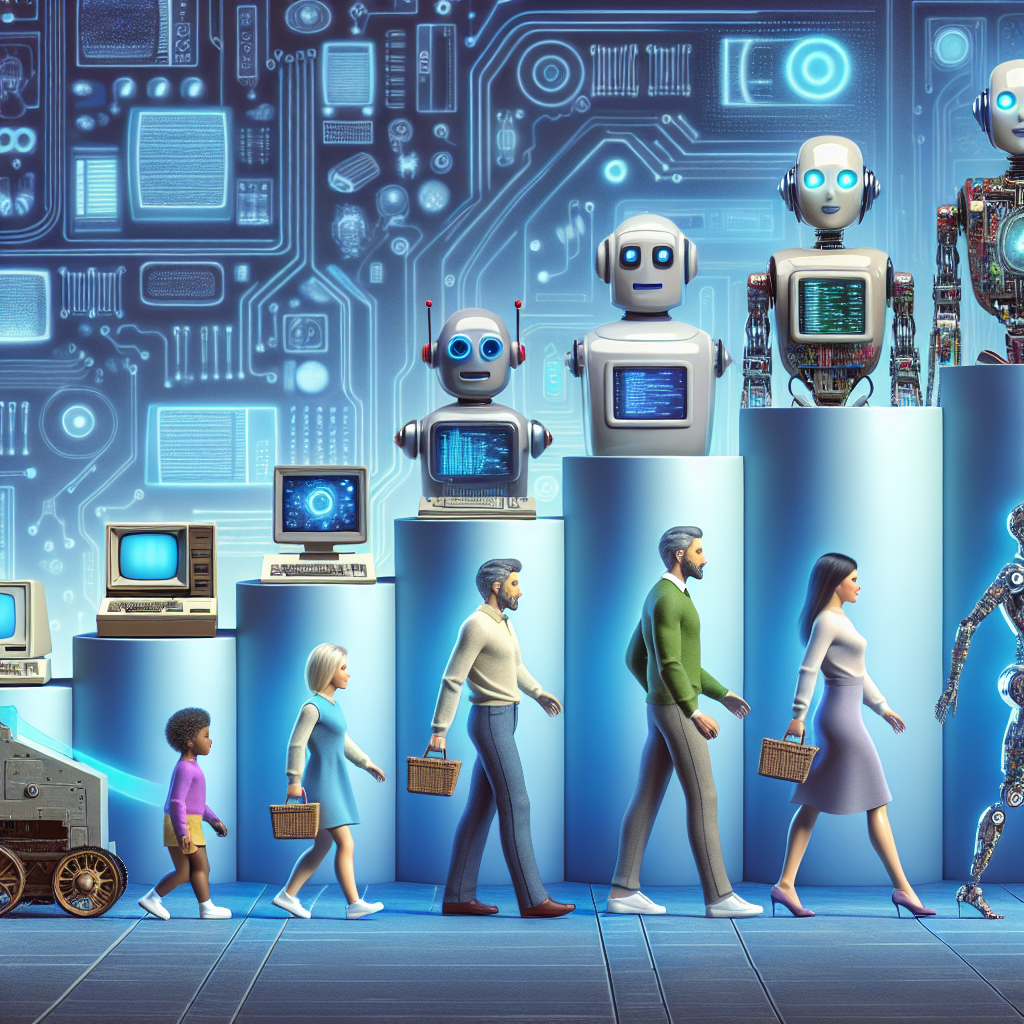Artificial Intelligence (AI) has become an integral part of customer service in recent years, revolutionizing the way companies interact with their customers. From chatbots to virtual assistants, AI technology has evolved to provide efficient and personalized customer service experiences. In this article, we will explore the evolution of AI in customer service, from its early beginnings to the cutting-edge technologies that are shaping the future of customer support.
Early Beginnings of AI in Customer Service
The use of AI in customer service can be traced back to the early 2000s when businesses started implementing chatbots on their websites to provide immediate responses to customer inquiries. These early chatbots used rule-based systems to generate pre-programmed responses based on keyword matching. While they were limited in their capabilities, they laid the foundation for more advanced AI technologies to come.
As technology advanced, AI-powered chatbots started to use natural language processing (NLP) and machine learning algorithms to understand and respond to customer queries more effectively. This allowed chatbots to provide more personalized and contextually relevant responses, leading to a better customer experience.
The Rise of Virtual Assistants
In recent years, virtual assistants have emerged as the next evolution of AI in customer service. Virtual assistants are AI-powered platforms that can interact with customers through voice or text, providing assistance and information in a conversational manner. Companies like Amazon, Google, and Apple have developed virtual assistants such as Alexa, Google Assistant, and Siri, which are integrated into their products and services.
Virtual assistants are able to perform a wide range of tasks, such as answering customer inquiries, making reservations, and providing product recommendations. They can also be integrated with other AI technologies, such as chatbots and machine learning algorithms, to provide a seamless and personalized customer experience.
The Advantages of AI in Customer Service
There are several advantages to using AI in customer service. One of the main benefits is the ability to provide 24/7 support to customers, without the need for human intervention. AI-powered chatbots and virtual assistants can handle a large volume of inquiries simultaneously, reducing response times and improving customer satisfaction.
AI technology also allows companies to collect and analyze large amounts of customer data, enabling them to gain insights into customer behavior and preferences. This data can be used to personalize interactions with customers, recommend products or services, and improve overall customer satisfaction.
Furthermore, AI-powered customer service platforms can be integrated with other business systems, such as CRM software and e-commerce platforms, to provide a seamless customer experience across all touchpoints. This integration allows companies to streamline their operations, reduce costs, and increase efficiency.
The Future of AI in Customer Service
As AI technology continues to advance, the future of customer service looks promising. Companies are already experimenting with cutting-edge technologies such as natural language understanding, sentiment analysis, and predictive analytics to further enhance the capabilities of AI-powered customer service platforms.
One exciting development in the field of AI is the use of emotional intelligence algorithms, which can detect and respond to the emotional state of customers. This technology allows virtual assistants to provide empathetic and personalized responses, leading to a more human-like interaction with customers.
Another area of innovation is the use of AI-powered chatbots and virtual assistants in augmented reality (AR) and virtual reality (VR) environments. These technologies enable customers to interact with AI-powered agents in immersive and interactive ways, providing a unique and engaging customer experience.
FAQs:
Q: How does AI-powered customer service differ from traditional customer service?
A: AI-powered customer service uses advanced technologies such as natural language processing and machine learning to provide personalized and efficient support to customers. Traditional customer service relies on human agents to handle inquiries, which can be time-consuming and less scalable.
Q: Can AI-powered customer service platforms replace human agents?
A: While AI-powered customer service platforms can handle a large volume of inquiries and provide immediate responses, they are not meant to replace human agents completely. Human agents still play a crucial role in handling complex issues and providing personalized support that AI technology may not be able to replicate.
Q: Are AI-powered customer service platforms secure?
A: AI-powered customer service platforms are designed to adhere to strict security protocols to protect customer data and privacy. Companies invest heavily in cybersecurity measures to ensure that their AI technology is safe and secure for customers to use.
Q: How can businesses integrate AI into their customer service operations?
A: Businesses can integrate AI into their customer service operations by investing in AI-powered chatbots, virtual assistants, and other customer service platforms. They can also leverage AI technologies to analyze customer data, personalize interactions, and improve overall customer satisfaction.
In conclusion, the evolution of AI in customer service has transformed the way companies interact with their customers, providing efficient and personalized support through technologies such as chatbots, virtual assistants, and beyond. As AI technology continues to advance, the future of customer service looks promising, with innovative developments that will further enhance the customer experience. By embracing AI in customer service, businesses can stay ahead of the curve and provide exceptional support to their customers.

